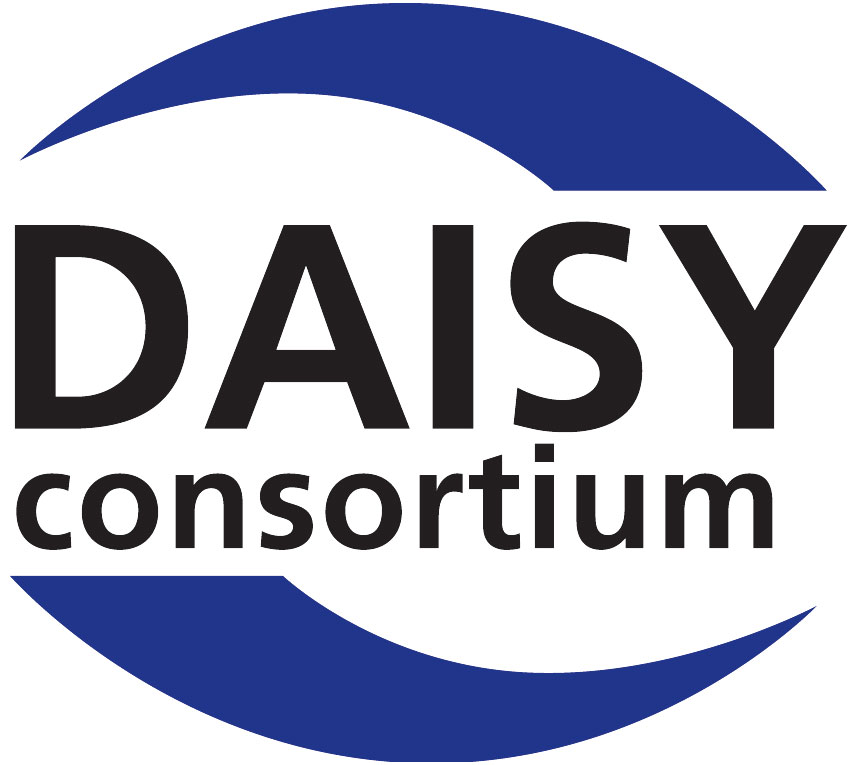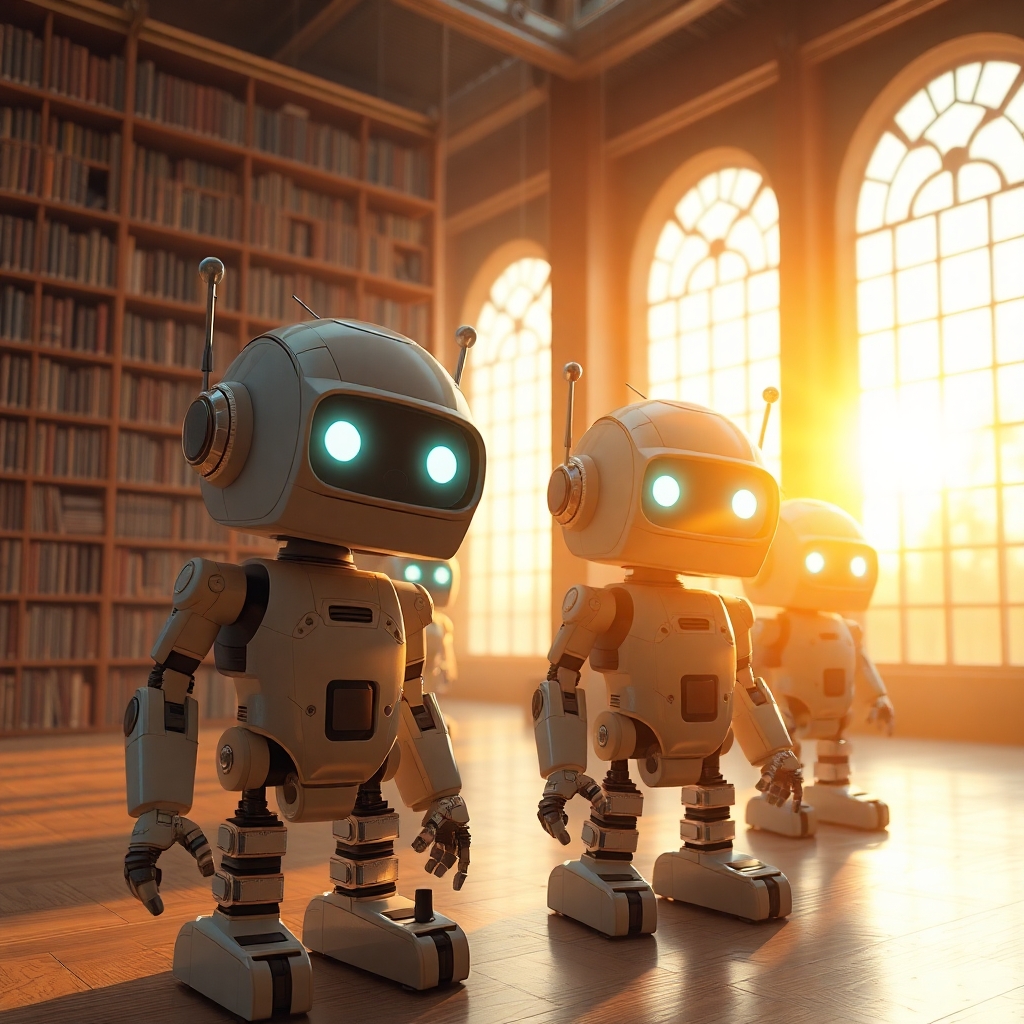Ten Potential Applications of AI in DAISY Libraries
Introduction
 There is a lot of discussion about AI at the moment, and the capabilities are developing rapidly. In the AI Use by DAISY Members survey conducted in October 2024 there were high levels of interest in the adoption of AI, with over half the respondents already using AI within their services and 70% planning to implement the technology in the coming years.
There is a lot of discussion about AI at the moment, and the capabilities are developing rapidly. In the AI Use by DAISY Members survey conducted in October 2024 there were high levels of interest in the adoption of AI, with over half the respondents already using AI within their services and 70% planning to implement the technology in the coming years.
The adoption of AI by DAISY members holds immense potential for the future. However, it is not without its challenges. In the survey DAISY members identified that the cost of AI services and the lack of technical expertise are potential barriers to adoption, along with data privacy, ethical concerns, and integration challenges.
If those challenges can be addressed, in the coming years DAISY members could be using AI in many ways to enhance access to books and other publications for people with print disabilities. Here are ten possible applications.
1. Natural Text to Speech
AI-driven natural text to speech technology is making impressive strides. In the future, DAISY libraries might leverage this technology to create more audiobooks with natural-sounding and expressive voices. As AI continues to evolve, we can anticipate even more lifelike and engaging text to speech, speeding up the production of audio content and hopefully enhancing the listening experience for users.
Try for yourself: Natural Reader demo
Read more: An Introduction to AI Speech
2. Cloned Voices
One potential application of AI in audiobook production is the ability to clone the voice of a human narrator. This technology could allow for seamless integration of new sections into existing audiobooks, ensuring consistency in narration. While this is still developing, the future holds great promise for more efficient updates and maintenance of audiobook collections.
Try for yourself: ElevenLabs
3. New Dialects and Languages
The future of AI could bring about new text to speech voices for dialects and languages that are currently underserved. By developing voices that cater to specific linguistic and cultural needs, DAISY libraries could reach a broader audience. This inclusivity may soon foster more equitable access to information and support the preservation of linguistic diversity.
Try for yourself: Microsoft Voice Gallery and listen to the different versions of English, French, Arabic, etc.
4. Making Images more Accessible
AI can analyze images in a publication and generate descriptive text that accurately conveys the image’s content. If this is used in conjunction with the surrounding text, this can be used to create alt text which can then be reviewed and improved by an expert human. If AI were available within a reading app, then it would be possible for a reader to ask questions about the image, if they wanted more information than the short alt text.
Try for yourself: Be My AI app
Read more: Using Artificial Intelligence for Image Descriptions, Exploring Artificial Intelligence: Image Descriptions
5. Structure Recognition
The conversion of inaccessible publications into accessible formats is a labor-intensive process today, but AI could revolutionize this in the near future. By recognizing and marking up various parts of a publication, AI could automate tasks such as removing background images and identifying headings, lists, and other elements. This could save significant time and effort, paving the way for the production of well-structured accessible publications at lower cost.
DAISY is exploring a collaboration with WIPO and UNICEF’s Accessible Digital Textbooks initiative to leverage OpenAI capabilities for standards based accessible document production.
6. Recognizing Scientific Expressions
Converting science and math materials into accessible versions has always been one of the most complex, specialist and time-consuming activities for DAISY members. Over recent years the AI powered tools to convert images of scientific expressions into MathML or LaTeX have improved enormously. DAISY member Benetech developed their PageAI technology to identify equations in books and transform them into MathML and recently announced an AI initiative to revolutionize STEM education that will enable students with dyslexia or visual impairments to read, listen, and ask questions about challenging concepts like equations and images. Leveraging AI to recognize and convert scientific expressions DAISY members could remediate inaccessible STEM content at scale, reducing time and cost associated with manual remediation and dramatically increasing the provision of learning materials for students with disabilities.
Try it yourself: Mathpix snipping tool
7. Summarization and Simplification
Readers with dyslexia and other print disabilities want to be able to easily understand complex textbooks and academic articles so that they can effectively learn and succeed in their studies. Large language models can summarize the key information from a publication, replacing complex vocabulary with simpler synonyms while maintaining the original meaning.
The level of simplification could be customizable to suit individual needs, producing summaries with improved readability for a wide range of people with reading comprehension challenges.
Try for yourself: upload a document to Google’s NotebookLM and generate a study guide or a briefing document.
8. Making Tactile Images Faster
Creating tactile images for print-disabled users is currently a skilled and intensive process. However, AI could, in the years to come, assist by analyzing images and generating drafts for human experts to refine. This initial AI-generated draft could streamline the production of tactile images, making the process more efficient and expanding the range of accessible materials available.
We are not aware of an AI tool that assists in making tactile images. We’d love to hear about any developments in this direction.
9. Converting Print and PDF Scores to MusicXML
Existing music recognition software can work for simple printed music but struggles to reliably interpret some musical elements accurately. This means that a fair amount of human intervention is still required before a high quality MusicXML file can be generated. AI could revolutionize music score conversion by improving symbol recognition, understanding musical context, and automating layout and formatting. This would lead to more accurate and efficient conversion, reducing manual effort and enhancing the possibility for producing accessible music using the outputs of the DAISY Music Braille initiative.
We are not aware of an AI tool that efficiently and accurately creates MusicXML from print scores. We’d love to hear about any developments in this direction.
10. Empowering Customer Interactions
The possibilities described above relate to the book conversion and reading experiences, but AI could also have applications for customer services. Libraries could use AI algorithms to analyze user reading history, preferences, and online behavior to better recommend books tailored to their interests. Natural language user searches could be beneficial for people not familiar with library catalog systems and virtual assistants could answer frequently asked questions, and guide users through library services.
Conclusion
There are a lot of grand claims about how AI will change jobs and the ways we do business, and it is unlikely that all the above potential applications will turn out to be effective and affordable. There are also some areas of concern to be addressed, not least inconsistency and variability, biases, ethical, and rights concerns. However, DAISY members are keen to explore possibilities that could offer a richer, more inclusive, and efficient service to their users. As your global organization creates the best ways to publish and read, DAISY is seeking to bridge the gap between the rapid progress of AI tools and the production of accessible publications. As AI technology continues to advance, the possibilities for enhancing accessibility are tantalizing, promising a future where people with print disabilities can enjoy equal access to information and knowledge.

